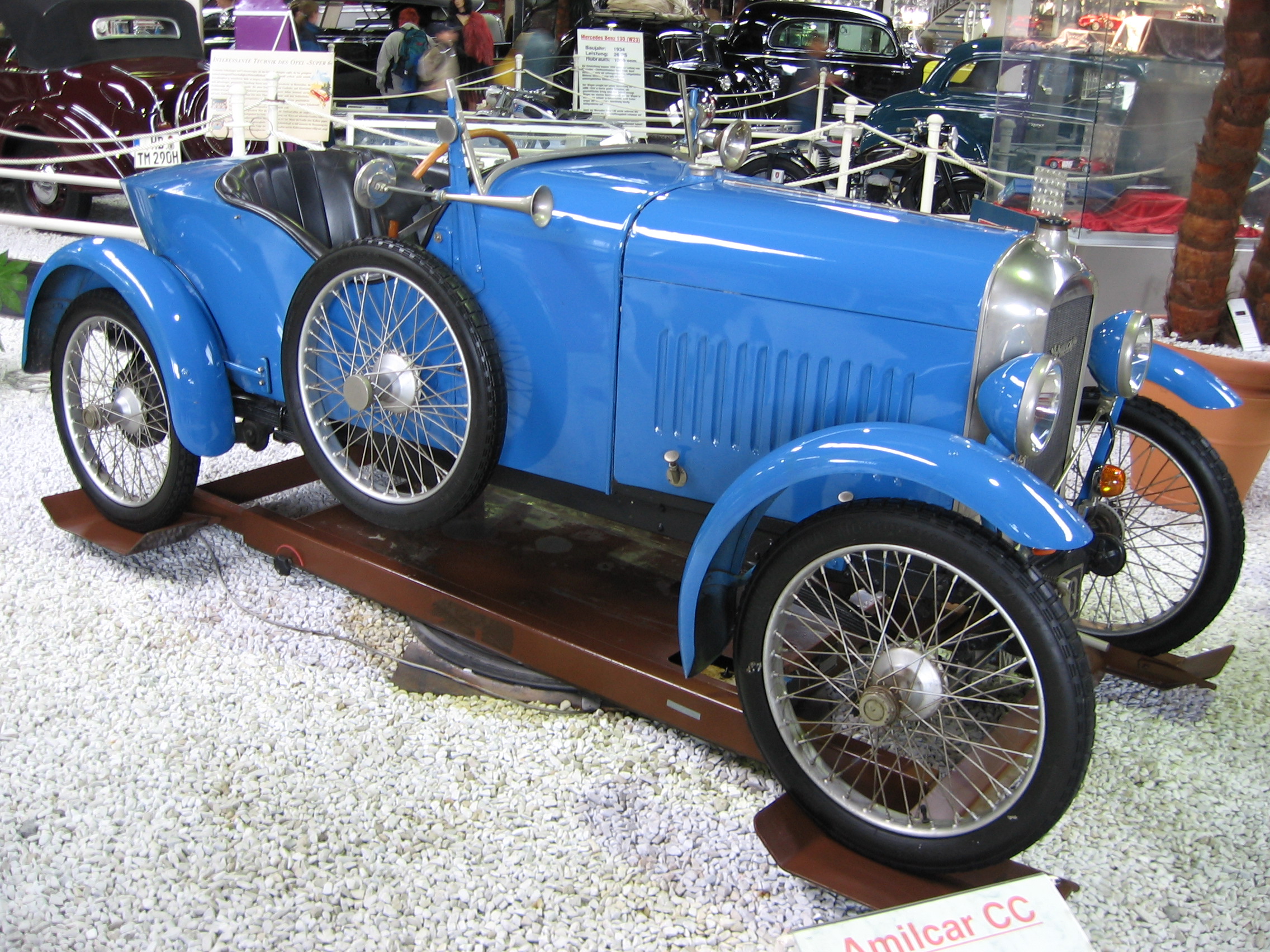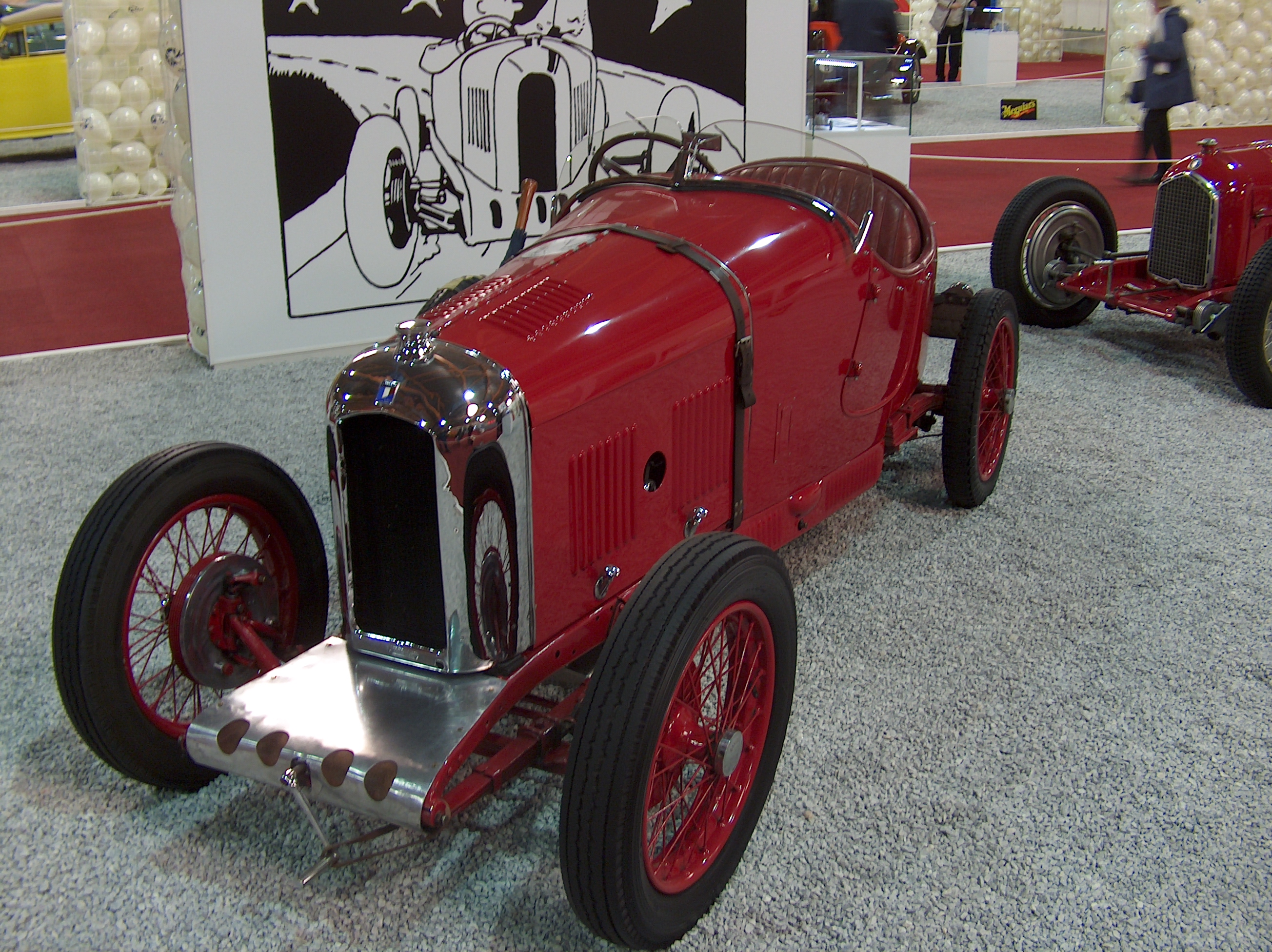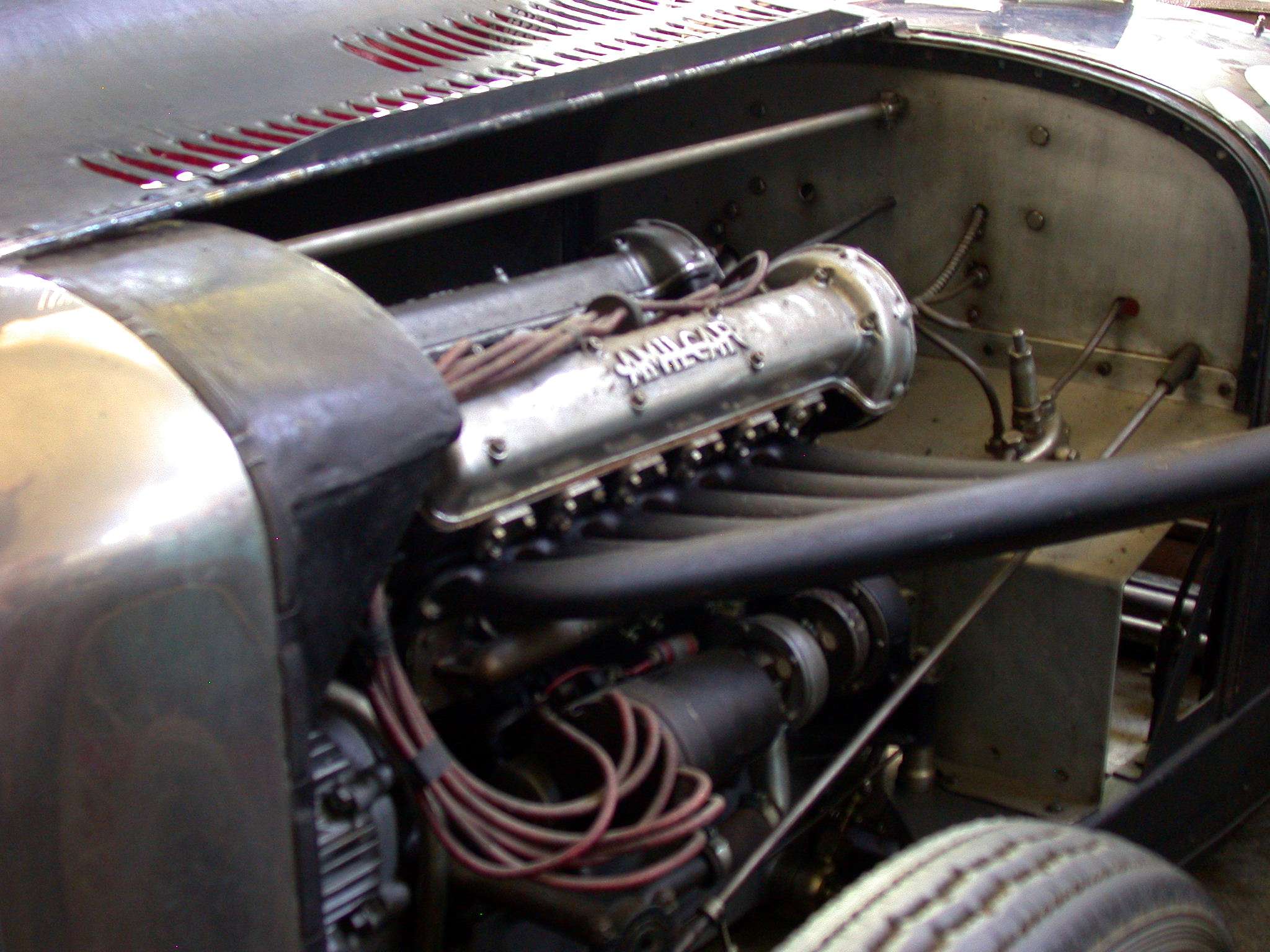Amilcar CS8 on:
[Wikipedia]
[Google]
[Amazon]
The Amilcar was a French

 From 1928 the company offered a light
From 1928 the company offered a light


 * 1922
* 1922
automobile
A car, or an automobile, is a motor vehicle with wheels. Most definitions of cars state that they run primarily on roads, Car seat, seat one to eight people, have four wheels, and mainly transport private transport#Personal transport, peopl ...
manufactured from 1921 to 1940.
History
Foundation and location
Amilcar was founded in July 1921 by Joseph Lamy and Emile Akar. The name "Amilcar" was an imperfect anagram of the partners' names. The business was established at 34 rue du Chemin-Vert in the11th arrondissement of Paris
The 11th arrondissement of Paris (''XIe arrondissement'') is one of the 20 Arrondissements of Paris, arrondissements of the capital city of France. In spoken French, the arrondissement is referred to as ''le onzième'' (; "the eleventh").
The ar ...
. However, Amilcar quickly outgrew their restricted city-centre premises, and during the middle part of 1924 the company relocated to Saint-Denis on the northern edge of the city.
Early years
The original Amilcar was a smallcyclecar
A cyclecar was a type of small, lightweight and inexpensive motorized car manufactured in Europe and the United States between 1910 and the early 1920s. The purpose of cyclecars was to fill a gap in the market between the motorcycle and the c ...
. Designed by and Edmond Moyet Edmond may refer to:
Arts and entertainment
* ''Edmond'' (play), a 1982 play by David Mamet
** ''Edmond'' (film), a 2005 film based on the 1982 play
* '' E.d.M.O.N.D'', a 2013 EP by Edmond Leung
* ''Edmond'', a 2016 play by Alexis Michalik
** ''E ...
, it bore a striking resemblance to the pre-war Le Zèbre
Le Zèbre was a French make of car built between 1909 and 1931 in Puteaux, and later Suresnes.
The company was founded by Jules Salomon and Georges Richard initially with finance from Jacques Bizet, son of composer Georges Bizet.
History
...
. The vehicle was first exhibited at the Paris Motor Show
The Paris Motor Show () is a biennial auto show in Paris. Held during October, it is one of the most important auto shows, often with many new production automobile and concept car debuts. The show presently takes place in Paris expo Porte de V ...
in October 1921. The business was a leading beneficiary of a cyclecar boom, prompted by a government initiative which held out the promise of a reduced rate of annual car tax, fixed at 100 francs per year, for powered vehicles weighing no more than 350 kg (dry weight, without fuel or water or such extras as a spare tyre/wheel), providing seating for no more than two people and powered by an engine of not more than 1100 cc. Once a vehicle exceeded these limits it ceased to be a cyclecar
A cyclecar was a type of small, lightweight and inexpensive motorized car manufactured in Europe and the United States between 1910 and the early 1920s. The purpose of cyclecars was to fill a gap in the market between the motorcycle and the c ...
and was instead officially designated a voiturette
A voiturette is a miniature automobile.
History
''Voiturette'' was first registered by Léon Bollée in 1895 to name his new motor tricycle. The term became so popular in the early years of the motor industry that it was used by many makers ...
.
The 4-cylinder, 903cc Amilcar CC
The Amilcar CC was a light sporting car produced by the French Amilcar company from 1922 to 1925. It was powered by a 903 cc four-cylinder, side-valve engine generating 18 bhp.
References
Amilcar vehicles
Vehicles introduced ...
appeared in 1922, with a wheelbase of just . The CC subsequently became available in two further versions; the Amilcar C4 was a slightly longer sports car, while the CS, introduced in 1924, was a brisker sports version with the engine size increased to 1004 cc. The side-valve
A flathead engine, also known as a sidevalve engine''American Rodder'', 6/94, pp.45 & 93. or valve-in-block engine, is an internal combustion engine with its poppet valves contained within the Cam-in-block, engine block, instead of in the cyl ...
engine had splash lubrication
Splash lubrication is a rudimentary form of lubrication found in early engines and transmissions. Such engines could be external combustion engines (such as stationary steam engines), or internal combustion engines (such as petrol, diesel or pa ...
, and came with a three-speed gearbox
A transmission (also called a gearbox) is a mechanical device invented by Louis Renault (who founded Renault) which uses a gear set—two or more gears working together—to change the speed, direction of rotation, or torque multiplication/r ...
. The most famous model of all was the CGS "Grand Sport" of 1924; this featured a 1074 cc sv engine and four-wheel brakes. This in turn evolved into the more sporty CGSS "Grand Sport Surbaissé". These models were built under license in Germany
Germany, officially the Federal Republic of Germany, is a country in Central Europe. It lies between the Baltic Sea and the North Sea to the north and the Alps to the south. Its sixteen States of Germany, constituent states have a total popu ...
(as the ) and in Austria
Austria, formally the Republic of Austria, is a landlocked country in Central Europe, lying in the Eastern Alps. It is a federation of nine Federal states of Austria, states, of which the capital Vienna is the List of largest cities in Aust ...
(as the Grofri) and in Italy
Italy, officially the Italian Republic, is a country in Southern Europe, Southern and Western Europe, Western Europe. It consists of Italian Peninsula, a peninsula that extends into the Mediterranean Sea, with the Alps on its northern land b ...
(as Amilcar Italiana). The marque
A brand is a name, term, design, symbol or any other feature that distinguishes one seller's goods or service from those of other sellers. Brands are used in business, marketing, and advertising for recognition and, importantly, to create and ...
entered automobile racing in the mid-1920s with a batch of supercharged double overhead camshaft
An overhead camshaft (OHC) engine is a piston engine in which the camshaft is located in the cylinder head above the combustion chamber. This contrasts with earlier overhead valve engines (OHV), where the camshaft is located below the combus ...
1100 cc six-cylinder cars that used a roller bearing
In mechanical engineering, a rolling-element bearing, also known as a rolling bearing,ISO 15 is a bearing which carries a load by placing rolling elements (such as balls, cylinders, or cones) between two concentric, grooved rings called race ...
crankshaft
A crankshaft is a mechanical component used in a reciprocating engine, piston engine to convert the reciprocating motion into rotational motion. The crankshaft is a rotating Shaft (mechanical engineering), shaft containing one or more crankpins, ...
in the full racing version; these vehicles were also available with plain metal bearings, driven by famous race driver André Morel
André Paul Victor Morel (3 August 188417 July 1961) was a French racing driver.
Life and career
Morel was born on 3 August 1884 in Troyes, France. His father died when he was 11. His parents at that time expected him Morel to become a prie ...
.
Financial challenges and the loss of independence
During the later 1920s the company expanded out of its original comfort zone of small economical cars: the results were mixed. The founders, Akar and Lamy, becoming less involved with the management of the business, were persuaded to conclude, in 1931, a business agreement with André Briès and Marcel Sée. Sée already knew Amilcar from the inside, having in January 1929 been dismissed from a position involved in management of the company. The early 1930s were years of economic crisis in France, and at the end of 1933 a company owned by Briès and Sée, called "Sofia" ''(Societe financiere pour l'automobile)'', took effective control of Amilcar, which nevertheless continued to function under its existing name. From 1928 the company offered a light
From 1928 the company offered a light touring car
Touring car and tourer are both terms for open cars (i.e. cars without a fixed roof). "Touring car" is a style of open car built in the United States which seats four or more people. The style was popular from the early 1900s to the 1930s. The ...
; called the "M-Type", it featured a side-valve 1200 cc engine and was launched in 1928. It was followed by the M2, M3, and M4 versions. The M-type and its successors continued to be produced through the ensuing years of financial difficulty, offered for sale till 1935, though production probably ended in 1934. 1928 saw the introduction of a straight eight, which was built with an ohc
An overhead camshaft (OHC) engine is a piston engine in which the camshaft is located in the cylinder head above the combustion chamber. This contrasts with earlier overhead valve engines (OHV), where the camshaft is located below the combustio ...
2.3-liter engine. This, the C8, proved unreliable, and soon disappeared with only a few hundred produced.
The acquisition of Amilcar by "Sofia" in 1933 did not in itself resolve the financial pressures. At the end of August 1934, still faced with disappointing sales volumes, the factory at Saint-Denis closed for the last time, as management struggled to save the business. A new model was clearly needed and in October 1934 the company presented the new 2-litre (12CV) Amilcar Pégase powered by a 4-cylinder, ohv 2150 cc engine supplied by Delahaye
Delahaye was a family-owned automobile manufacturing company, founded by Émile Delahaye in 1894 in Tours, France. Manufacturing was moved to Paris following incorporation in 1898 with two marriage-related brothers-in-law, George Morane and Le ...
. There was also a competition version of the Pégase with a 2490 cc (14CV) engine. By October 1935, the smaller Amilcar models having been discontinued, the Pégase, produced under much reduced circumstances at premises in Boulogne-Billancourt
Boulogne-Billancourt (; often colloquially called simply Boulogne, until 1924 Boulogne-sur-Seine, ) is a wealthy and prestigious Communes of France, commune in the western suburbs of Paris, France, located from the Kilometre zero, centre of Paris ...
, was the only Amilcar model listed.
Another change of control
Recognising the impossibility of sustaining the Amilcar business with a single model, but unsure of how to finance or produce another, management turned to Hotchkiss which had recently taken a large shareholding in "Sofia", Amilcar's holding company. Hotchkiss had problems of their own at this time, their hugely lucrative armaments business having recently been nationalised by the left-wingBlum
Blum may refer to:
Places
* Kfar Blum, a kibbutz in Israel
United States
* Blum, Texas, a town
* Blum Basin Falls, a waterfall in Washington
* Blum Lakes, six lakes in Washington
Science and technology
* Blum axioms, in computational comple ...
government
A government is the system or group of people governing an organized community, generally a State (polity), state.
In the case of its broad associative definition, government normally consists of legislature, executive (government), execu ...
, while their middle-market automobile business was under increasing pressure as volume automakers became more effective in pushing their own ranges upmarket with models such as the Peugeot 402
The Peugeot 402 is a large family car produced by Peugeot in Sochaux, France, from 1935 to 1942. It was unveiled at the Paris Motor Show in 1935, replacing the Peugeot 401.
The Peugeot 402 stands out in automotive design by its very streamlin ...
and the Citroën Traction. Henry Mann Ainsworth, the Automobile Director at Hotchkiss, had already been presented, by the high-profile engineer Jean-Albert Grégoire
Jean-Albert Grégoire (7 July 1899 in Paris – 19 August 1992) was one of the great pioneers of the front-wheel-drive car. He contributed to the development of front-wheel-drive vehicles in two ways. The first way was in developing and promoting ...
, with a promising prototype (at that stage based on an Adler chassis) for a lightweight 7CV category, small, technically advanced family car. It was agreed that the automotive businesses of Hotchkiss and Amilcar would be merged and the prototype would be developed into an Amilcar model that would become the Amilcar Compound
The Amilcar Compound is a front wheel drive car with unitary body/chassis introduced shortly before World War II by Amilcar after their takeover by Hotchkiss. It was designed by the famous French engineer Jean-Albert Grégoire.
Slow start
...
.
The front-wheel-drive
Front-wheel drive (FWD) is a form of engine and transmission layout used in motor vehicles, in which the engine drives the front wheels only. Most modern front-wheel-drive vehicles feature a transverse engine, rather than the conventional l ...
Amilcar Compound
The Amilcar Compound is a front wheel drive car with unitary body/chassis introduced shortly before World War II by Amilcar after their takeover by Hotchkiss. It was designed by the famous French engineer Jean-Albert Grégoire.
Slow start
...
was technically advanced in design for its era, featuring a monocoque
Monocoque ( ), also called structural skin, is a structural system in which loads are supported by an object's external skin, in a manner similar to an egg shell. The word ''monocoque'' is a French term for "single shell".
First used for boats, ...
frame made of a light alloy
An alloy is a mixture of chemical elements of which in most cases at least one is a metal, metallic element, although it is also sometimes used for mixtures of elements; herein only metallic alloys are described. Metallic alloys often have prop ...
and independent suspension
Independent suspension is any automobile suspension system that allows each wheel on the same axle to move vertically (i.e. reacting to a bump on the road) independently of the others. This is contrasted with a beam axle or deDion axle system in ...
all around. Its engine at launch was a four-cylinder side-valve unit of 1185 cc. The Compound's ambitious use of aluminium in its body structure and its front-wheel-drive configuration meant that production got off to a slow start, and although it was launched in October 1937, 584 of the 681 passenger cars produced date only from 1939, with a further 64 produced during the early months of 1940, before the German invasion of May/June 1940 effectively ended civilian automobile production in the Paris region. Production prototypes for an upgraded Compound with an OHV 1340 cc engine were running by the summer of 1939, and this version was scheduled for an October launch at the 1939 Paris Motor Show, but the motor show was cancelled and the launch was postponed – as matters turned out indefinitely – due to the intervention of war
War is an armed conflict between the armed forces of states, or between governmental forces and armed groups that are organized under a certain command structure and have the capacity to sustain military operations, or between such organi ...
which France (and Britain) declared against Germany
Germany, officially the Federal Republic of Germany, is a country in Central Europe. It lies between the Baltic Sea and the North Sea to the north and the Alps to the south. Its sixteen States of Germany, constituent states have a total popu ...
in early September 1939.
Production of the Amilcar was not resumed after World War II
World War II or the Second World War (1 September 1939 – 2 September 1945) was a World war, global conflict between two coalitions: the Allies of World War II, Allies and the Axis powers. World War II by country, Nearly all of the wo ...
.
List of important Amilcar models


Amilcar CC
The Amilcar CC was a light sporting car produced by the French Amilcar company from 1922 to 1925. It was powered by a 903 cc four-cylinder, side-valve engine generating 18 bhp.
References
Amilcar vehicles
Vehicles introduced ...
* 1922 Amilcar C4
* 1923
* 1924 Amilcar CGS
* 1925
* 1926 Amilcar CGSS
* 1927
* 1928 Amilcar M
* 1929 Amilcar C8
* 1930 Amilcar C8 bis
* 1930
* 1934 Amilcar Pégase
The Amilcar Pégase is a mid-sized car made between 1934 and 1937 by the French Amilcar company. The 2150 cc four-cylinder engine placed it in the 12CV car tax band. Other engine sizes, including a 2490 cc (14CV) unit developed in-house, wer ...
* 1938 Amilcar Compound
The Amilcar Compound is a front wheel drive car with unitary body/chassis introduced shortly before World War II by Amilcar after their takeover by Hotchkiss. It was designed by the famous French engineer Jean-Albert Grégoire.
Slow start
...
aka B38, sedans being in regular manufacture from 1938 to 1940
Isadora Duncan
Isadora Duncan
Angela Isadora Duncan (May 26, 1877, or May 27, 1878 – September 14, 1927) was an American-born dancer and choreographer, who was a pioneer of modern contemporary dance and performed to great acclaim throughout Europe and the United States. Bor ...
's fondness for flowing scarves was the cause of her death in 1927 in an automobile accident in Nice, France
Nice ( ; ) is a city in and the prefecture of the Alpes-Maritimes departments of France, department in France. The Nice urban unit, agglomeration extends far beyond the administrative city limits, with a population of nearly one million
. The famed American dancer was the passenger in an Amilcar CGSS when her silk scarf became entangled around the open-spoked wheels and rear axle, breaking her neck.Craine, Debra and Mackrell, Judith 2000. ''The Oxford dictionary of dance''. Oxford University Press, Oxford. p152
References
External links
* http://vea.qc.ca/vea/marques1/amilcar.htm {{Webarchive, url=https://web.archive.org/web/20050307112916/http://vea.qc.ca/vea/marques1/amilcar.htm , date=2005-03-07 * http://historic-motorsport.de/TEAM_BURO/VITA_PRIVAT/MOTORSPORT/AMILCAR/amilcar.html Car brands French brands Cyclecars Vintage vehicles Defunct motor vehicle manufacturers of France Vehicle manufacturing companies established in 1921